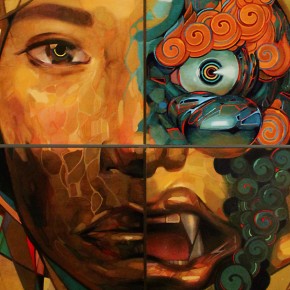Yours in the spirit of clarity,
Toby
 Dealing Mindfully with Guilt and Shame
Dealing Mindfully with Guilt and Shame
Guilt and shame are two of the feelings and emotions that generally we least like to deal with. Instinctively our reaction to them is to push them out of our conscious into our unconscious mind, where we hope they will somehow disappear if we ignore them long enough.
The price of ignoring repressing and avoiding guilt and shame is that we then continue to be victimized by them, for many people therefore guilt and shame continue to bother them and obstruct their happiness thru-out their life.
The benefits of opening to our experience of guilt and shame is that we are able to process them effectively which then in turn removes a major obstacle to our fundamental experience of happiness in life. More than we remove a major obstacle to making progress in our relationships and professional development as well. Thus in terms of both personal happiness and gaining an edge in our relational and professional development we should be interested in our experience of guilt and shame.
So what are guilt and shame? I’m going to use a definition from Robert Bly, which I picked up in his book “Iron John”: “A traditional way of differentiating guilt from shame is this: Shame, it is said, is the sense that you are an utterly inadequate person on this planet, and probably nothing can be done about it. Guilt is the sense that you have done one thing wrong, and you can atone for it.”
From this we can start to see that dealing with shame involves connecting to that part of us that feels fundamentally inadequate to life, fundamentally value-less, fundamentally unworthy. It means to, with care, courage and curiosity to invite that part of us that feels shameful to come forward and talk to us, to receive support and to be healed. We can also see that dealing with shame is about connecting to a fundamental belief that we have about ourselves on some level, working each day to replace that belief with a view of self that affirms our self-confidence, self-competence and value as an individual, and acting in ways that demonstrate this.
Dealing with guilt involves looking at specific instances where we feel or believe we have done something wrong and connecting to the emotions that surround that experience. It involves checking the validity of the belief that we have done something wrong with an appropriate rational analysis (perhaps it is a preconception?), and if there is indeed something that we have done that needs correcting or atoning for, then investigating what can actually be done in terms of correcting action?
Some questions for getting to know your shame and guilt:
- What are the times in my day and life when I really experience myself as inadequate, valueless, unworthy of being present in the situation or even unworthy of being a happy human? What beliefs perpetuate these feelings of inadequacy?
- What in my past do I feel most guilty about? If I were to look at that past act objectively and rationally, would I consider the emotional guilt I feel as being valid?
- If I do feel I have done something wrong, then what needs to be done to atone for it?
- What can I do each day to demonstrate to myself that I am adequate and of value in life, and to build the foundations of genuine self confidence?
Asking yourself these questions and observing the responses that they stimulate in your mind, perhaps even writing them down is a good way to start bringing awareness to your own personal feelings of guilt and shame, and awareness of them is the beginning of your path to dealing with them in a truly mindful and effective manner.
© Toby Ouvry 2014, you are welcome to use or share this article, but please cite Toby as the source and include reference to his website www.tobyouvry.com











